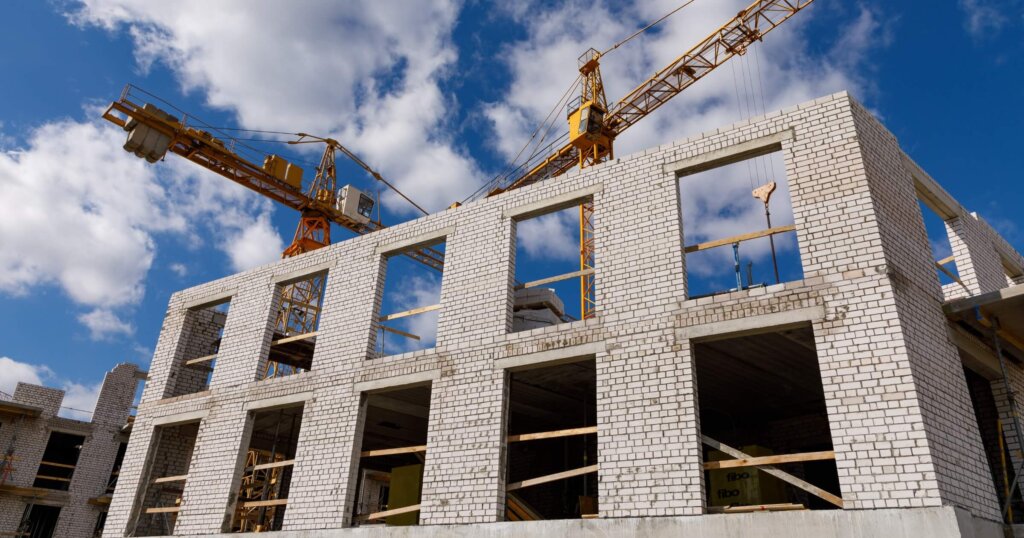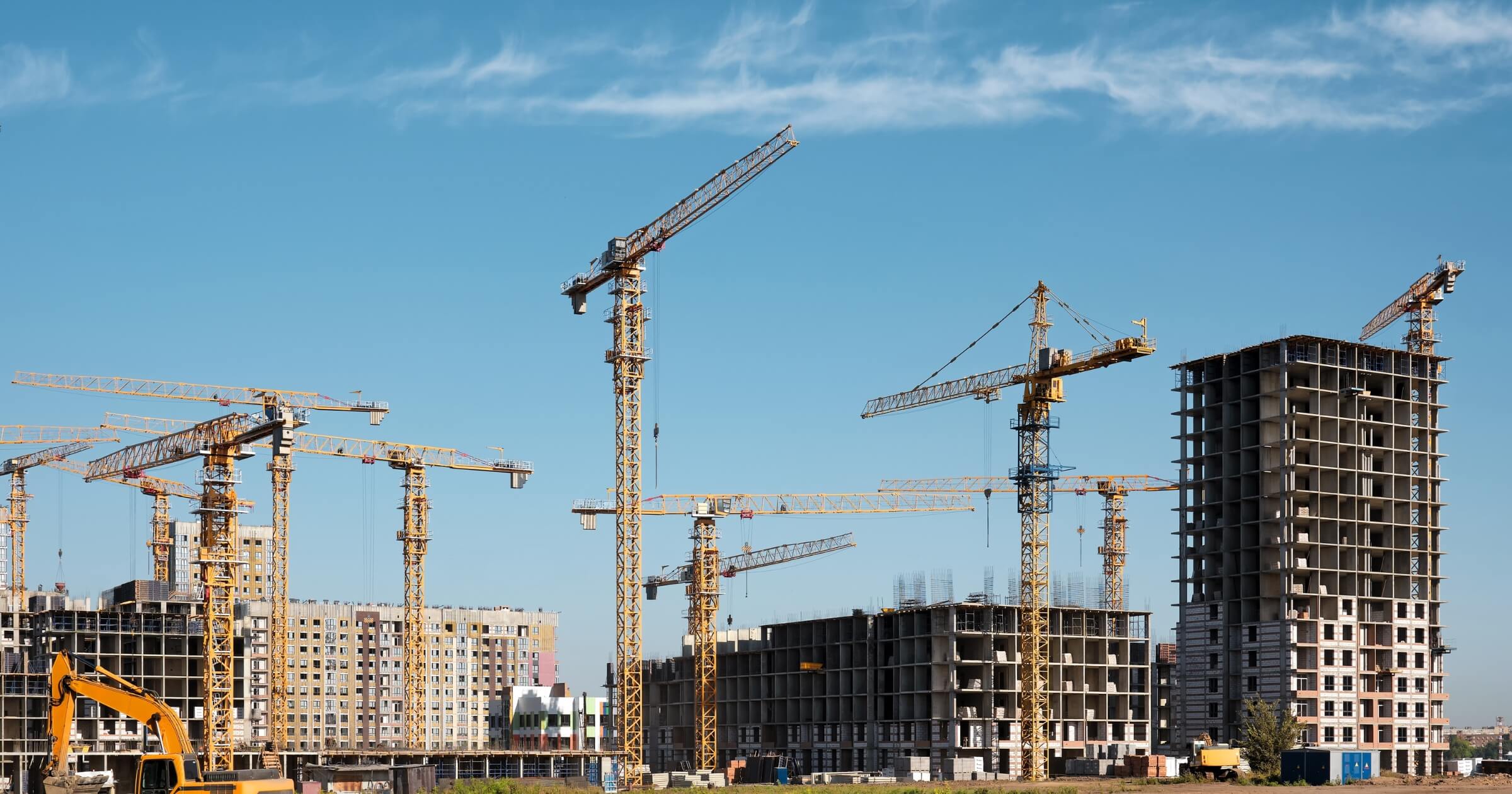A sharp rise in abandoned construction projects is hitting the industry hard this spring. According to ConstructConnect’s latest Project Stress Index (PSI), March 2025 saw a 9.5% increase in project abandonments, the highest jump in over a year. The data suggests that although some projects are moving forward, a troubling number are being shelved altogether, leaving contractors, designers, and suppliers reeling.

Unfinished residential high-rise construction with crane. Photo via Shutterstock.
Private sector project abandonments hit all time high
Not all sectors are being impacted equally. The report shows that for every public project abandoned in March, nearly two private ones were scrapped. That imbalance points to deeper uncertainty among private developers, who may be more sensitive to interest rate pressure, financing limitations, and shifting demand in commercial real estate.
ConstructConnect’s Chief Economist, Michael Guckes, pointed to rising construction loan costs and economic uncertainty as likely culprits. While interest rates have held relatively steady in early 2025, the lingering impact of past hikes continues to echo throughout the market.
Commercial projects are proving especially vulnerable. Office construction continues to decline, and warehouse development is slowing after several years of explosive growth. Retail projects are also on shakier ground, particularly in areas that saw overbuilding during the pandemic recovery.
A mixed picture: fewer delays, more cancellations
March brought a curious contradiction: while project abandonments surged, the number of delayed and paused projects dropped. Delayed projects fell by 0.7%, and on-hold projects dropped by 8%. On the surface, that might sound like good news. However, when coupled with the abandonment spike, it suggests that many projects previously paused or delayed are now being canceled outright rather than revived.
In other words, some developers may be done waiting. Instead of pushing timelines further into 2025 or 2026, they’re pulling the plug. It’s a decision that sends ripples across the trades, affecting everyone from engineers and architects to framing crews and suppliers who rely on steady pipelines of work.
What this means for contractors in 2025
Construction professionals on active job sites might not feel the effects immediately. But planners, estimators, and anyone responsible for business development or preconstruction should take note. When projects vanish from the pipeline, competition for remaining work intensifies. Margins also shrink with resources tied up in preconstruction that may never convert to revenue.
That means contractors need to adjust bidding strategies, watch market signals more closely, and strengthen their client relationships to ensure early involvement in the projects that do go forward.
There’s no clear signal yet that this spike will continue through Q2. But the fact that abandonment rates jumped at the same time delays and pauses declined is worth watching. It could mark a shift in developer behavior. That can help with planning, but also means less time to prepare when projects disappear.
If federal interest rate cuts materialize later in the year, as some predict, it could breathe new life into some dormant plans. But for now, the pressure is on for anyone working in planning, preconstruction, or business development to adapt quickly.
Want more construction updates like this? Sign up for our newsletter at underthehardhat.org/join-us and stay ahead of the trends that are shaping job sites and project pipelines across North America.



